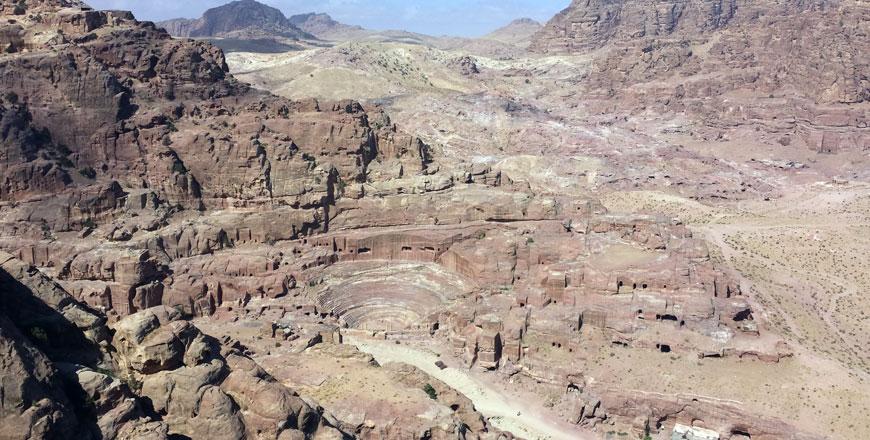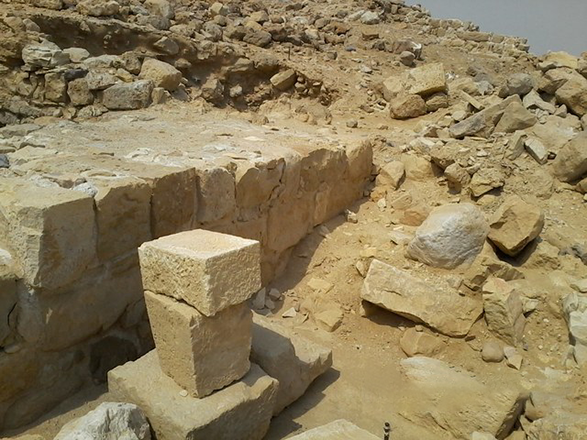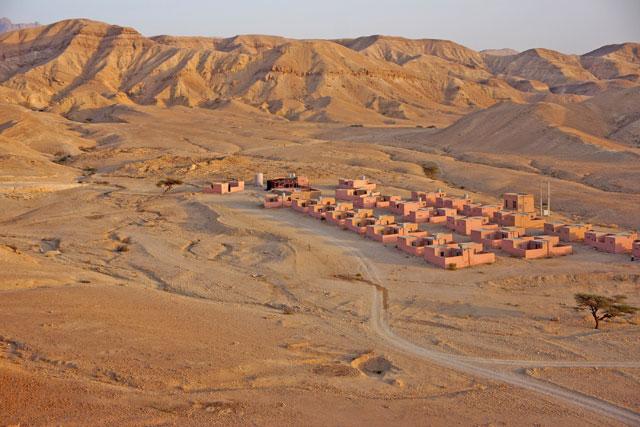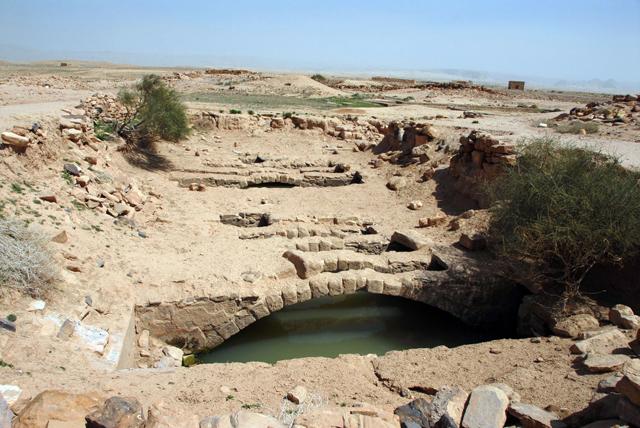You are here
Population boom points to Nabataean cultivation of ‘inhospitable’ southern Jordan
By Saeb Rawashdeh - Jan 05,2019 - Last updated at Jan 05,2019

The view of the theatre in ancient Nabataen town of Petra (Photo courtesy of Jennifer Ramsey)
AMMAN — A population boom that took place during a period of Nabataean, Roman and Byzantine rule must have been caused by multiple factors including surprisingly — cultivation, an associate professor from the US has recently said.
"Petra, as the capital of a trading empire in the ancient Near East during the late first century BC, influenced the region’s landscape, which experienced a significant increase in population," said associate professor at The College at Brockport, State University of New York, Jennifer Ramsay.
"Although this may seem like an inhospitable landscape today," she continued, "the ancient Greek historian Diodorus Siculus, writing in the first century BC, described Petra as having a very significant population [of around 10,000]".
Ramsey said that even though Bir Madhkur, a site in Wadi Araba, receives less than 100mm of precipitation a year, it was a major caravan station along the ancient spice route that connected Petra with the Mediterranean port of Gaza, and has evidence of Nabataean occupation.
Ramsay added that sites like Ayla (Aqaba), may have been founded in response to the Roman annexation of Egypt and the subsequent revitalisation of Egyptian Red Sea ports.
"The Nabataeans probably saw this as a direct threat to their control of the lucrative aromatics trade from the southern Arabian Peninsula. And then Trajan’s annexation of the Nabataean Kingdom in 106 AD as the province of Arabia, and the construction of the Via Nova Traiana... likely led to the increase in population," Ramsay outlined.
Likewise, Ramsay explained, the transfer of a Roman legion from Jerusalem to Ayla at the end of the third century AD led to an increase in military personnel — as well as civilians — in military camps in southern Jordan.
"The legion remained at Ayla, then the southernmost Roman military base along the eastern frontier, until at least the beginning of the fifth century AD," she said, noting that other sources suggest that Ayla remained an active commercial port through late antiquity, until its fall to the Arabs in 630AD.
It is clear from this that the Nabataeans rapidly learned how to collect the small amounts of precipitation that were available to them. A wide variety of hydraulic engineering features utilised by the Nabataeans as their population grew have been documented, Ramsay elaborated.
Botanical remains also provide direct evidence of the Nabataean’s growth and adaptation, which is supported by archaeological remains of field walls, farmhouses, threshing floors, catch dams, wadi barriers and ethnographic research, she said.
The sites of Ayla, Humayma, Bir Madhkur and Ayn Gharandal also had military forts during the Roman period, whose inhabitants would have needed augmented quantities of food — as a result of this, an increased demand for agricultural commodities would have been likely, she pointed out.
"Local cultivation on any scale may well have been a necessity at these sites, to support the great sedentary population," Ramsay highlighted.
This is not to say the populations of southern Jordan were relying solely on local agriculture, specifically cereal grains, to supply all of their needs, the researcher explained.
"However, the data cited [weeds, chaff, and field systems] points to at least some local cultivation," Ramsay stressed.
Moreover, the presence of cereal grains found on sites through the different periods of occupation, and the presence of crop processing by-products supports the idea there was a local agricultural economy, the scholar underlined.
"As a result, the landscape of southern Jordan and the Negev Desert in antiquity would have been significantly altered from a barren desert to a more verdant and anthropomorphic environment, reflective of a larger population that required more agricultural commodities to support their existence," Ramsay concluded.
Related Articles
AMMAN — The site of Bir Madhkur is located in the Petra hinterland some 12 km northwest of Petra, near Wadi Araba.
AMMAN — Located in Wadi Araba, 12 kilometres northwest of Petra, Bir Madhkur was a Roman fort and a settlement on the well-known Incense Rou
AMMAN — Despite no “direct literary sources”, a Canadian scholar is piecing together archaeological clues to the origins of the ancient sett
















